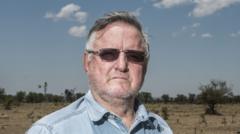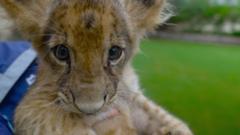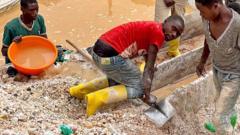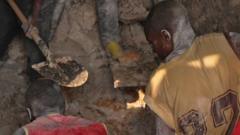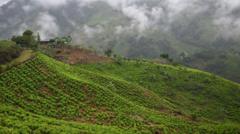At least 50 hippos and other large animals have succumbed to a deadly anthrax outbreak in Virunga National Park, the oldest national park in Africa. This unfortunate event was reported by park director Emmanuel De Merode, who noted that the first sightings of dead animals occurred last week along the Ishasha River. The exact cause of the outbreak remains unclear, but tests have confirmed the presence of the Bacillus anthracis bacteria responsible for anthrax.
Fifty Hippopotamuses Fall Victim to Anthrax Outbreak in Virunga National Park
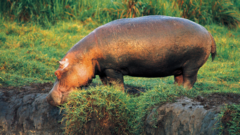
Fifty Hippopotamuses Fall Victim to Anthrax Outbreak in Virunga National Park
Deadly anthrax outbreak claims lives of wildlife in Congo's prime biodiversity area as efforts to contain spread intensify.
The park’s management has begun recovery efforts to prevent further contamination, although they face significant logistical challenges. "It's difficult due to lack of access and logistics," De Merode explained to Reuters. Without excavators at their disposal, the park officials are resorting to the use of caustic soda to assist in the burial of the carcasses. Given the river's flow toward Lake Edward, additional reports of dead animals have raised alarms in the region.
The Congolese Institute for the Conservation of Nature has issued warnings to local residents, advising them to steer clear of wildlife and to boil water from local sources before consumption. Spanning an area of 7,800 sq km (3,000 sq miles), Virunga National Park is known for its extraordinary biodiversity but has also been marred by ongoing conflict with various rebel groups. These groups often clash with the Congolese army, further complicating conservation efforts.
In the previous decades, concerted efforts had been made to restore the hippo population in Virunga, which had dwindled from a pre-war count of over 20,000 to merely a few hundred due to poaching and internal strife. Despite the current dilemma impacting this iconic species, passionate conservationists continue their work amid the dangers inherent to this troubled region.
The Congolese Institute for the Conservation of Nature has issued warnings to local residents, advising them to steer clear of wildlife and to boil water from local sources before consumption. Spanning an area of 7,800 sq km (3,000 sq miles), Virunga National Park is known for its extraordinary biodiversity but has also been marred by ongoing conflict with various rebel groups. These groups often clash with the Congolese army, further complicating conservation efforts.
In the previous decades, concerted efforts had been made to restore the hippo population in Virunga, which had dwindled from a pre-war count of over 20,000 to merely a few hundred due to poaching and internal strife. Despite the current dilemma impacting this iconic species, passionate conservationists continue their work amid the dangers inherent to this troubled region.


